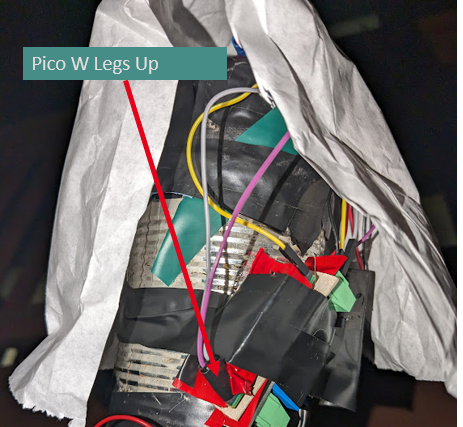I don't use the nascent straight key mode of the Project TouCans 20 meter ham radio as much as I could because the onboard Pico-W that serves as the control center and keyer of the rig, historically, has had unreliable Wi-Fi performance. (Alas, I partially blame the Windows laptop that sends the straight key signals as well.) Sadly, this can result in the key being stuck down which requires me to lower the radio and reset the keyer.
While I've marveled at the fact that a laptop could be 20 feet from the Pico-W and have just adequate communications, and a signal level that showed as medium to weak. That's all, apparently, been fixed with a simple flip of the Pico-W. Literally.
The Pico-W had power supply connection issues when mounted in a plug board directly on the rig like so:
It's not too, too hard to see why. The battery leads are smallish, and were by no means a compression fit into the plugboard. I fussed fussed with this configuration, but to no avail. Also? This is the configuration that had weak Wi-Fi signal. Note that the legs are down, into the plugboard, pointed at the rig.
I finally switched back to a legs up Pico-W configuration yesterday. It's reminiscent of the early prototype picture shown below. (I think these are also the first labeled pictures of TouCan Wireless. I need to pick up my documentation game a bit.)



Comments
Post a Comment
Please leave your comments on this topic: